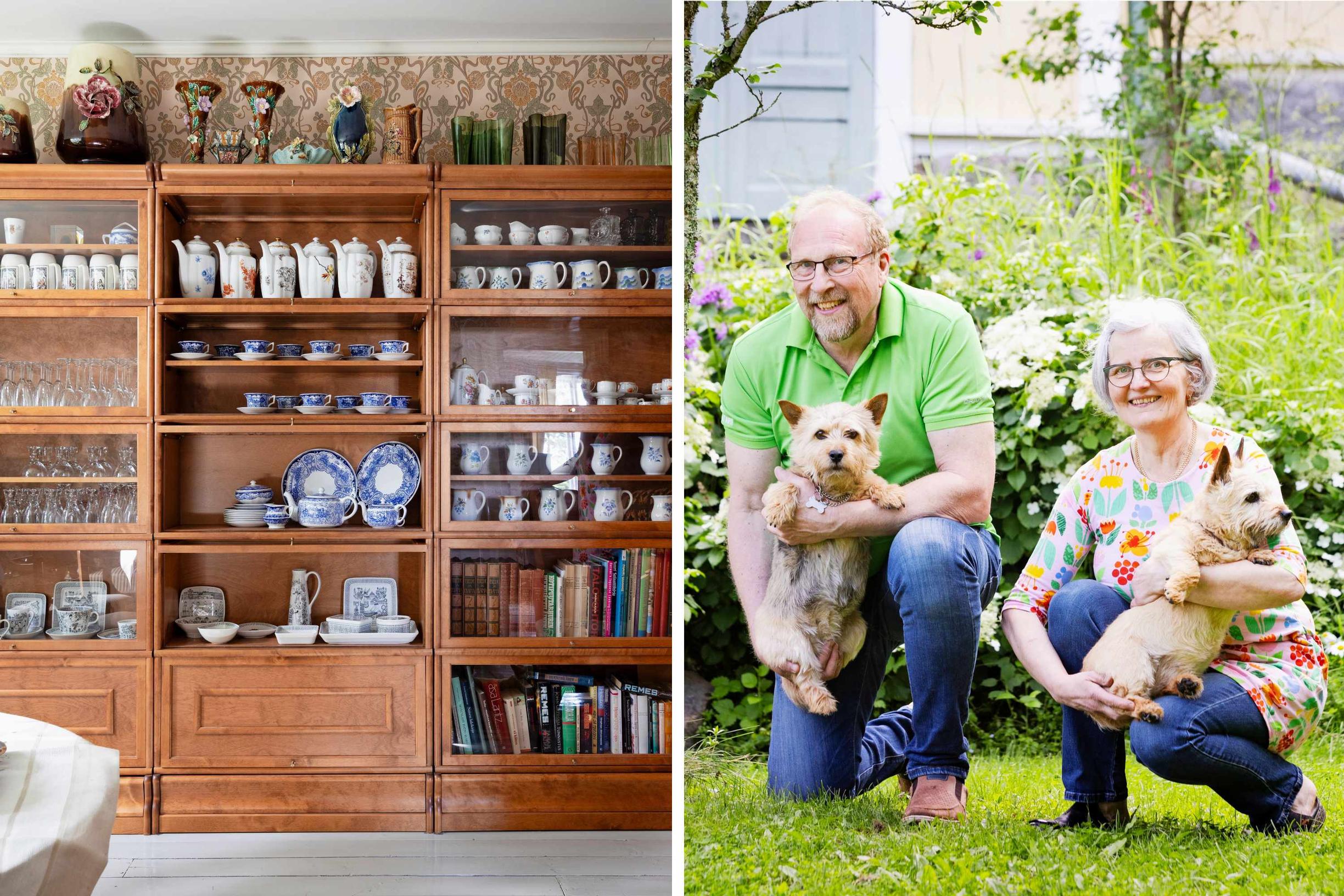
Living in a tableware shop! Jaana and Harri’s vintage Arabia—and the surprise in their kitchen cabinet
A break from renovation work prompted Jaana Kaarro and Harri Koski to begin collecting old dishware. Today, they sell vintage Arabia tableware in the downstairs of their converted village school home.
Who lives here: Tableware sellers and vintage Arabia enthusiasts, Jaana Kaarto, 61, and Harri Koski, 64, along with their Norwich terriers Hilma and Kerttu.
Home Paimala School in Turku, built in 1904.
Floor area 700 square meters (about 7,535 sq ft) total, with 160 square meters (about 1,722 sq ft) in living space.
Housing costs They spend around 9,000 euros a year on electricity and other running costs.

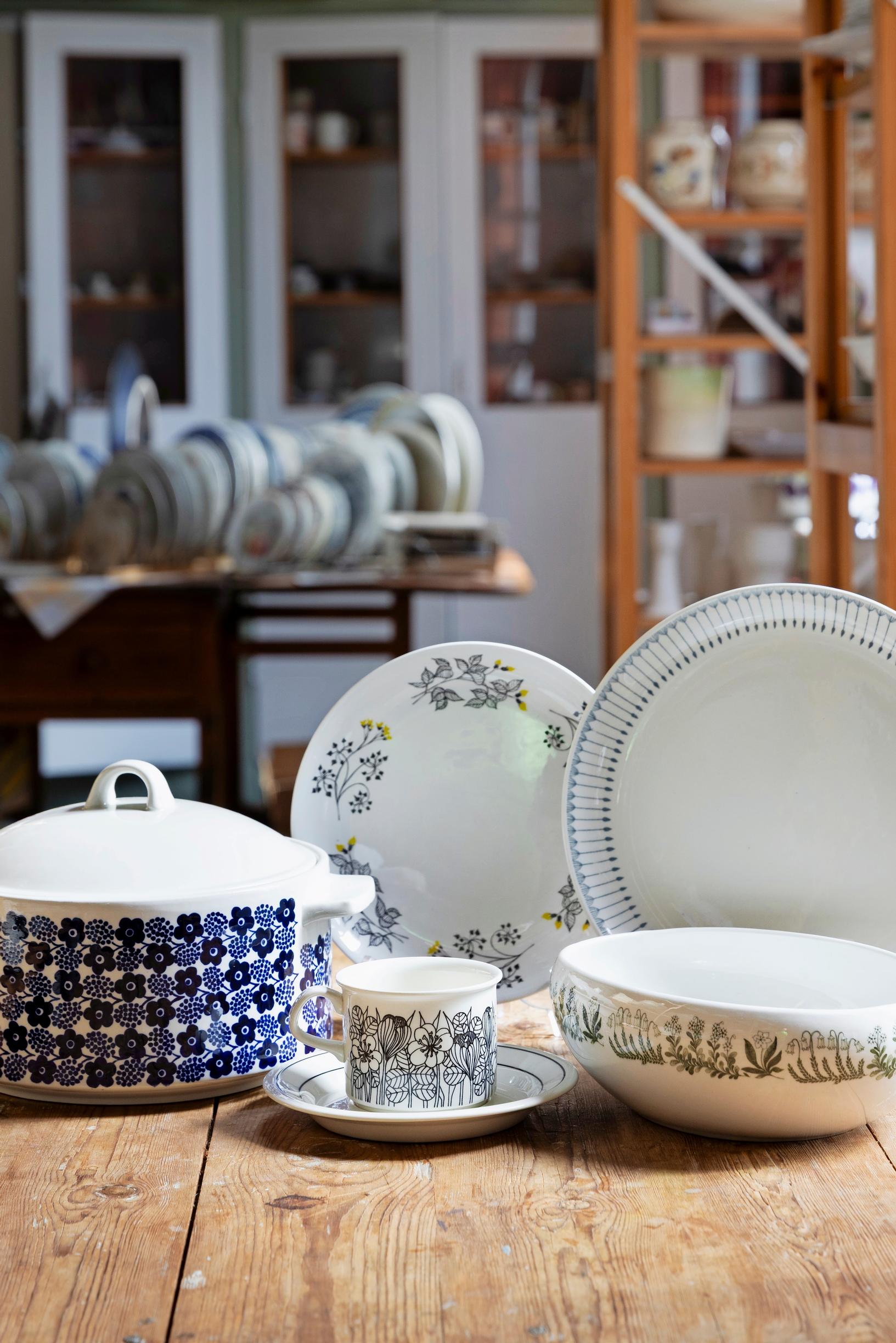
Along a winding road in Turku’s Paimala area stands an old yellow school building. Gravel crunches underfoot as Norwich terriers Hilma and Kerttu come racing to greet us, followed by their owners, Jaana Kaarto and Harri Koski.
Today, the old school is not only Jaana and Harri’s home but also their tableware shop. The couple has sold old Arabia dishware for over 20 years and has run the shop in Paimala for about 14. Finnish and Asian visitors alike come to admire the collection.
Downstairs classrooms hold shelves loaded with cups, plates, and platters. Right now, nearly 20,000 pieces are for sale. Glancing up at the tall shelves packed with vintage ceramics, you might worry about breaking something.
The couple says customers have only accidentally broken a few dishes.
“We’ve probably broken more ourselves,” Jaana laughs.
They live upstairs. Right by the front door, Arabia greets you with iconic plant-themed wall plates by Esteri Tomula. But when we step into the kitchen, there’s a surprise: Their everyday dishes aren’t Arabia at all, but Rörstrand’s Kulinara line from Sweden.
“We can’t bring ourselves to use Arabia each day,” Harri explains.
At least their morning coffee or tea is served in Teema mugs, adorned with Arabia decoration designs from different eras.
“We drank from Krokus mugs this morning. And at the shop, I take my coffee breaks using a chipped mug. I’d hate to use a flawless one,” Jaana jokes.

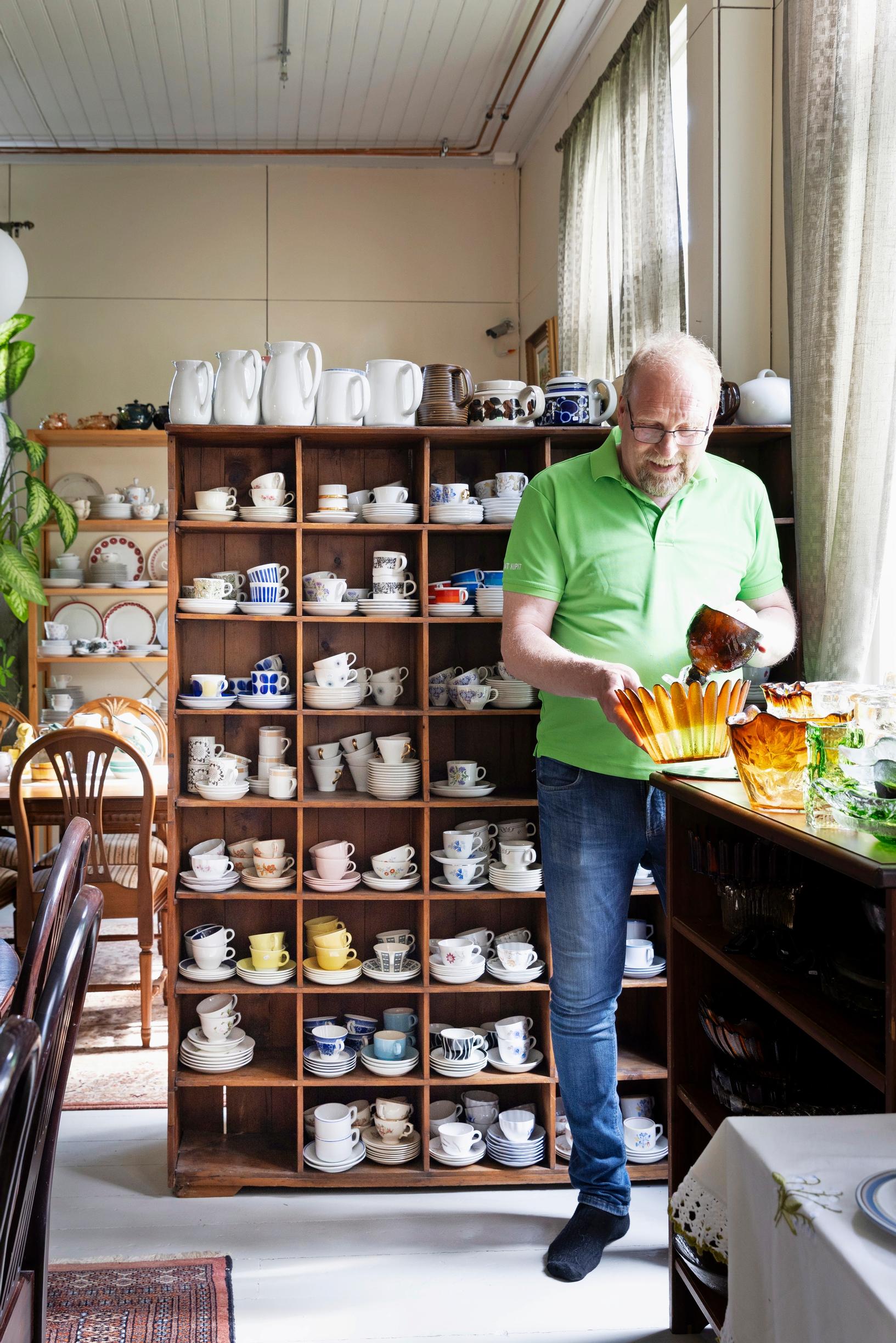
Jaana found the Paimala village school listed for sale. Renovations ended up taking three years.
A spark from spice jars
The couple’s interest in Arabia took off in the early 2000s, when Jaana and Harri were renovating their previous home, an 1800s house in Raisio. One summer day, they took a break and biked to Turku.
In the city center, they stopped at an antique shop window and spotted three large spice jars decorated with pinkish flowers. Both immediately thought they’d be perfect for their new kitchen.
“The shopkeeper showed us the jars and pointed out Arabia’s pipe stamp on the bottom,” Jaana says.
“At that time, we knew absolutely nothing about Arabia stamps,” Harri says.
The pipe stamp typically appears on Arabia dishes from the 1930s and 40s.
Those jars went on the windowsill, and the couple became collectors. Now they own eight large and small spice jars in total. They ordered a custom shelf for them in a prominent spot in Paimala.
Not long after that bike trip, Harri planned a summer café at the Krookila local heritage center in Raisio, where Jaana ran a restaurant.
Harri furnished the café with old furniture and props, serving coffee in vintage Arabia cups. To their surprise, customers began asking if the cups were for sale.
“I told them everything was for sale if the price was right,” Harri says.
After that, the couple began studying Arabia’s history intensively. The summer café became a shop for old Arabia tableware in 2004.
As their collection grew, the space became too cramped. Jaana and Harri realized they could combine their home and the store—if they found the right property.
“We’d been looking at small village schools, but many had been renovated too modern for our taste,” Harri says.
Then, around Easter 2008, luck struck. Jaana came across the old Paimala village school in a listing. Renovations ended up taking three years.
By Midsummer 2011, they’d moved upstairs, and the dish shop opened downstairs that October.
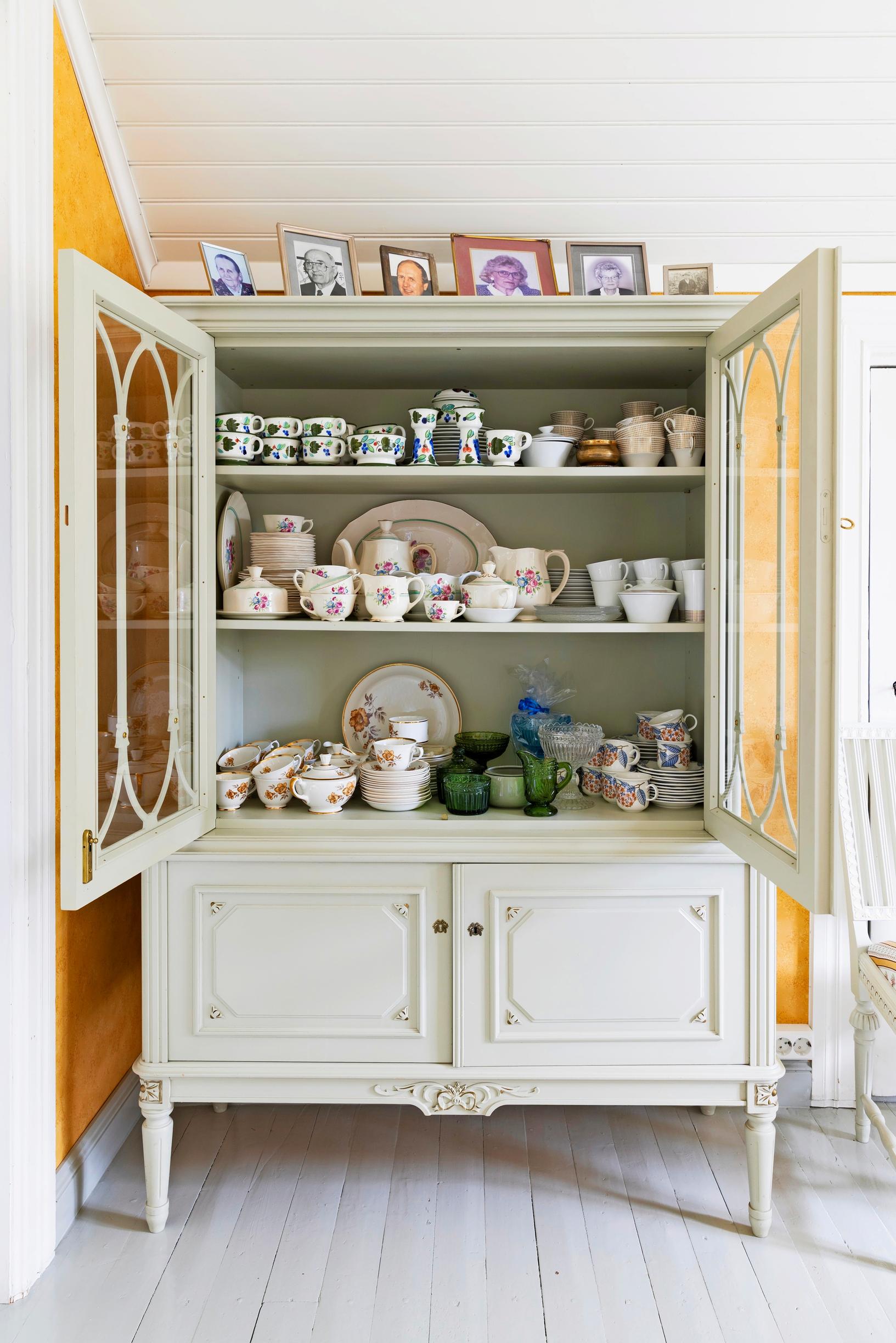
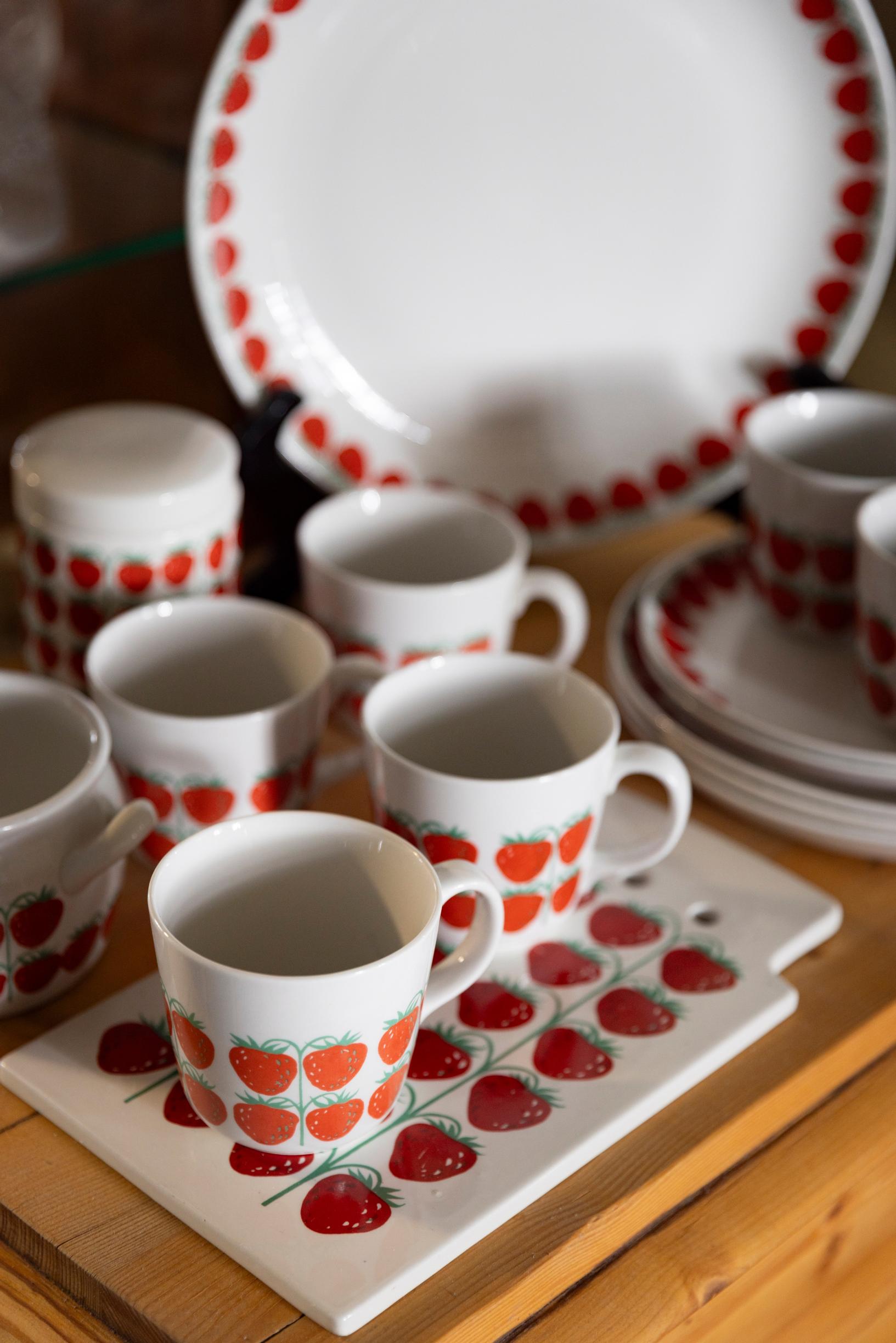
The understated white Arctica, a classic for special occasions, is nearly impossible to sell.
Ceramics that evoke memories
Harri remembers that the cups at their first summer café weren’t especially rare or valuable, yet they stirred strong emotions and memories in customers. According to them, nostalgia is the main reason Finns buy old Finnish ceramics. Asian buyers appreciate the design elements, but for Finns, this tableware is more personal. Almost everyone in Finland has lifted an Arabia cup to their lips at some point.
Many people have deep childhood memories tied to these dishes. Harri recalls his mother drinking coffee from a turquoise 1960s Maija cup.
“That cup didn’t even have a saucer.”
Jaana, meanwhile, clearly remembers her aunt’s wealthy mother-in-law serving coffee in Myrna with gold edges.
“I admired those cups every time I visited.”
She started collecting Myrna then, and now it sits in her display cabinet among the others.
That same cabinet also holds a blue-flowered Tellervo set that Jaana and Harri bought early on.
“I showed the cups to my mother. She just scoffed that everyone used to have them. She lived through the 1950s, when Tellervo really was everywhere,” Jaana says.
That cabinet also contains the Rio series Jaana inherited from her mother, as well as the Jaana cups, of course, and the coveted Palermo line from the late 1980s and early 90s. It’s a perfect example of what collectors are after these days. Many seek sets from the late 1950s, 60s, and beyond.
“Favorites include Polaris, Heini, Hilkka, Rypäle, and Krokus,” Jaana says.
Among older sets, Fasaani and Maisema are still popular. Among more recent collections, Teema is sought after, particularly the rarer colors like yellow.
One surprise, Jaana notes, is the Siro series. These white dishes with a thin gold rim and embossed detail are currently among their top sellers.
“Siro bucks the trend. Usually, white dish sets aren’t very desirable,” Jaana says.
For instance, the understated white Arctica for special occasions is nearly impossible to sell. Asked which set is hardest to move, they respond without hesitation.
“Myrna,” Harri says.
“The gold-decorated series is a close second,” Jaana adds.
Both date from the 1930s and ’40s and currently sell slowly. They were extremely popular for decades, so supply far outstrips demand. The gold edges also limit their use—they can’t go in a microwave or dishwasher.

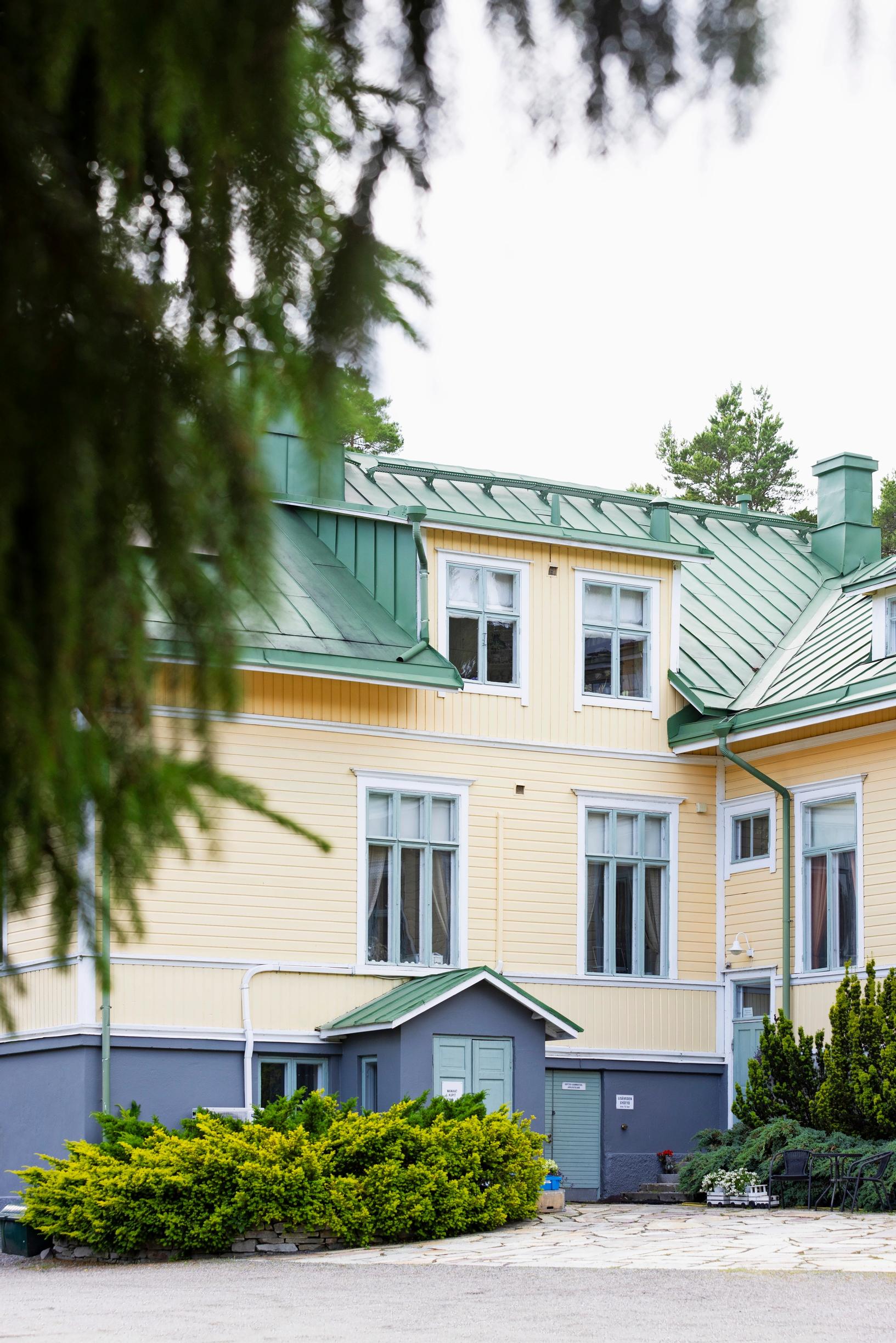
Memories spring to life among the stacked dishware in the shop.
Old tableware is meant to be used
When the workday ends at six, Harri signs off, feeds the dogs, and watches the news. Meanwhile, Jaana keeps the online store running, sometimes taking calls as late as nine. Many people offer them dishes to buy. Usually, Jaana first requests a photo of the tableware, so there’s no need to hunt for the stamp.
“We can typically identify Arabia lines from photos. The key is that everything offered should be in good condition,” Jaana says.
They hear many stories behind these dishes in the course of buying and selling. Jaana has noticed, for instance, that some people never clear out a single estate, while others wind up sorting out four in a short time.
“It varies. Some do none, and some do a lot all at once,” Jaana says.
Harri has observed how, among the stacks of dishes, memories often resurface. Several times, a younger customer has spotted a dish they recall breaking when they were a child.
“They see it on the shelf, feel guilty about the one they broke years earlier, and have to buy it for their mother,” Harri says.
The couple remind buyers that even old dishes should be used. They hold up well, but not if they’re forgotten. If tableware is kept in a cupboard and never used, younger generations won’t have any memories tied to it.
“Decades from now, people will be emptying cabinets and attics. Where no memories exist, perfectly good plates might get tossed when settling someone’s estate,” Harri summarizes.
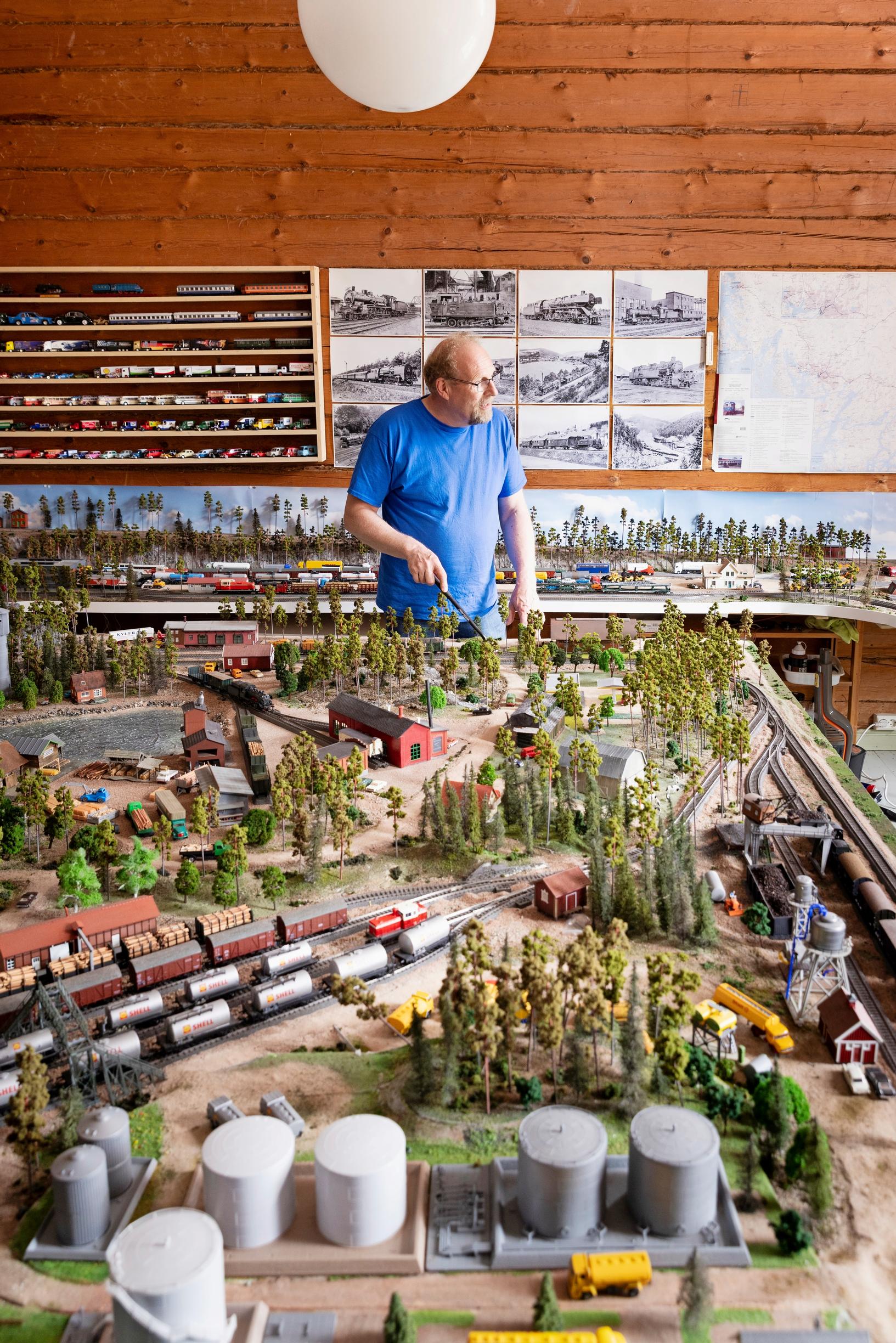
“We each have our own recliner”
Who gets annoyed by mess first?
Harri: Nobody does. We have a cleaner who comes in.
Jaana: We’d be cleaning all day if we had the time and energy.
What’s the most fun thing you do together?
Harri: Traveling together. We bought a camper a year ago. We haven’t used it much, but we went to Sodankylä in Northern Finland last fall. In early June, we drove through Sweden to Norway.
What happens at your place between 7 and 8 p.m.?
Jaana: We watch the news and updates on Ukraine. That’s pretty standard.
Harri: Global events have affected business a bit. When Russia invaded, our online store went quiet for a while.
Where do serious discussions take place at your house?
Jaana: In the car or in the sauna.
Who bakes in your home?
Jaana: Me.
Harri: I can’t cook at all.
Which household item could you never give up?
Harri: The TV.
Jaana: That’s obvious for you. As for me, I’d never give up the yard. We’re close to town but still out in the countryside.
Harri: We wouldn’t give up our peace and quiet here.
What’s the next purchase for your home?
Jaana: Our washing machine is about to give up. Even in a two-person home, we really can’t do without it.
What’s an endless project in your home?
Jaana: Painting the front door. Still not done.
Harri: We need to paint the inside of the shop door. In winter, we can’t keep it open, so that won’t work.
Jaana: And in the summer, we’re open so many days that there’s no time to paint.
Which of you spends more time on the couch?
Harri: Me.
Jaana: We each have our own recliner, but even though we got them at the same time, Harri’s is far more worn.


